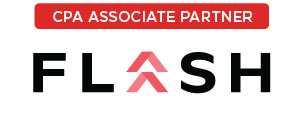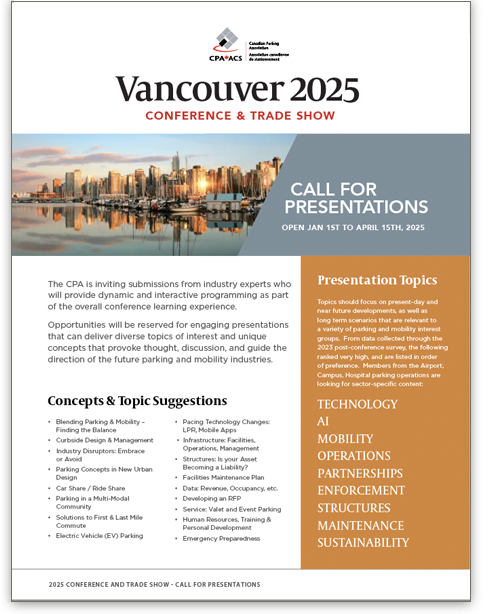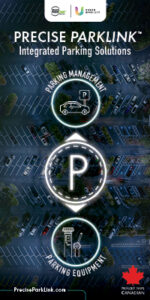By Jay Boychuk and Lisa Oelke, hb Solar Canada
Parking lots are assets for those that charge for the spaces within them, or need them to attract customers or even employees. They serve one main purpose, to provide a place to leave cars, whether it is for an hour, or a day. What if that asset could be turned into a multi-purpose piece of land that not only provides parking, but generates additional cashflow, and helps the environment? Parking lots can do a surprising thing, they can generate electricity, and not only that, its green energy. Introducing solar covered parking can do just that.
Why would a parking lot operator want to be a producer of green energy? Large cities can have a tremendous amount of asphalt covered surfaces, some above 40% of their land mass. Suburban areas don’t escape these large amounts of asphalt coverage either. A lot of that density is roadways, with surface parking lots significantly adding to the total as well. What does all this asphalt do to our environment if we just use it for parking cars?
When it comes to identifying the greatest challenge to meeting Green House Gas (GHG) reductions, transportation leads in Ontario as the single-largest emitting sector in the economy at 35%. In response to these statistics, the Ontario Government is encouraging drivers to switch to electric vehicles, (EV’s) by offering rebates of up to $14,000 with the purchase of an EV. Quebec and B.C. have similar statistics and have also offered incentives. The Electric Vehicle Chargers Ontario(EVCO) incentive serves to increase access to charging stations with funding to build a network of fast-charging EV stations in cities, along highways, at workplaces, apartments, condos, and public places across Ontario. These measures create demand for additional EV charging in locations where cars need
to park…
By Scott Sounart, PE
Parking lots play a vital role in the success of the buildings they serve, serving as a de-facto lobby and delivering the initial impression of the property. A run-down parking lot creates an unattractive and unwelcoming image that makes the entire complex seem less appealing and inviting. Perhaps more importantly, a derelict lot can also pose potentially hazardous conditions for visitors and employees and their vehicles. Not only can this undermine a business by making it’s location less attractive to potential customers, but it can also lead to costly legal liability if visitors or employees suffer personal injury or damaged vehicles.
Yet, in spite of the obvious hazards that can be caused by run-down or improperly maintained parking lots, many owners treat their lots as an afterthought. This is partly a perception problem. Many owners develop lots rather than a parkade because they mistakenly think that parking lots are essentially maintenance-free. They assume that they can just pave over an area of land, paint in stripes for spaces, and forget about it.
While it’s true that the typical lot requires less maintenance than a parkade, maintenance is required. Sure, there are no concrete ramps, floors, or support columns to care for, but a parking lot’s pavement undergoes a great deal of wear and tear every day from multi-ton vehicles, rain and snow, and even the rays of the sun. As such, it’s essential to have an assessment and maintenance plan to preserve the property’s aesthetics, ensure customer and tenant safety, and extend the service life of the pavement.
Pavements can be one of a commercial facility’s most expensive assets to maintain, but these costs can be minimized. There are seven primary types of asphalt distress, any one of which can require repair. The good news is that a pavement…
By Elizabeth Hueftlein
We’ve suffered enough from cold-cracked, pot-holed, muddy parking lots with puddles the size of lakes. Let’s face it, the Canadian climate just isn’t very kind to concrete and asphalt. And I won’t even mention the problems we’re dealing with when it comes to storm water runoff. It’s time for a solution, and there is one on the market made of 100% recycled plastic. Plastic has such a bad reputation, yet we still use it in so many different situations. Why not use a recycled plastic solution to solve your parking issue?
Think about the things you put in your recycling bin; ever wondered where they go once they’re loaded into the recycling truck? I’ll give you a general overview of the process that our products go through to go from waste to a useable ground reinforcement product that is used in parking lots.
Step 1: Sortation – the contents of the recycling boxes go to a materials recovery facility (MRF), called a “murf”. There, the different types of plastic are sorted, baled, and crushed or compacted.
Step 2: Processing – a recycling facility takes in the baled plastic and processes it into either a granulate or pellet. This is also the stage that colour pigment can be added to the plastic (in the case of pelletizing).
Step 3: Manufacturing – The granulate, or pellets can be mixed with other plastics to a specific “recipe” and colour called masterbatch is added to the granulate. The pellets or granulate are then shaped into a value-added product by injection or intrusion moulding.
It’s important to note that not all plastics behave the same way. There is a considerable amount of science behind creating useful products from plastic waste. In 2016 one company with a facility in St. Clements, ON helped divert 47,000 metric tonnes of…
By Danielle Desjardins
We are on the brink of a revolution, a revolution that will profoundly affect society, change the way cities look and function and fundamentally transform how people and goods move.
It’s been dubbed the “driverless revolution” and it will be brought about by the advent of autonomous vehicles (AV), cars that drive themselves with little or no human intervention. In addition to their effect on modes of transport, AVs are poised to disrupt many industries: transit, insurance, all industries that currently need drivers, driving support services, and the technology sector — large industries that will have to shift their strategies in the wake of driverless cars.
One major disruption could be on parking. Among other innovations, the revolution will bring, we will see AV fleets moving continuously between the various places they are needed, rendering the need for close and convenient parking spaces much less necessary.
As Alain L. Kornhauser of Princeton University told the online magazine Curbed, “Having parking wedded or close to where people spend time, that’s going to be a thing of the past. If I go to a football game, my car doesn’t need to stay with me. If I’m at the office, it doesn’t need to be there. The current shopping centre with the sea of parking around it, that’s dead.”1
How soon will that revolution begin? A number of car manufacturers predict that AVs will be launched about 2020, with many suppliers focusing first on driverless taxis. RethinkX, a think tank on technology-driven disruption, believes that by 2030 “95% of U.S. passenger miles traveled will be served by autonomous electric vehicles.” 2 Others foresee a clear majority of urbanites not even needing to own cars by 2040, because they’ll subscribe to some form of on-demand self-driving car service.3 McKinsey & Company believe that once technological…
By Brad Done
Parking lot safety all comes down to selecting the right bollard
Bollards are often over-looked but they play a significant role in the safety and aesthetics of almost every business. In a way, they are kind of like the masked vigilantes of a superhero movie—they never ask for thanks, they just silently protect the citizens and structures around them. That analogy might be a bit dramatic, but bollards really can save lives and prevent property damage. The key is selecting the right type for your business.
In its simplest form, a bollard is an unadorned metal post used in front of buildings or other outdoor spaces in which the flow of traffic must be controlled. They are normally spaced out so that typically-sized vehicles can’t get through them and this makes them an essential component of safe perimeters and parking lots. Bollards are available in varying colors, heights, widths and degrees of ornamentation and impact-resistance. A properly-chosen bollard will blend with a business’ architecture while providing an adequate level of impact-resistance to prevent property damage and protect pedestrians.
Normally, a business will select various types of traffic control bollard to perform these tasks on their property. Traffic bollards perform serval functions: they can help separate cars and pedestrians, clearly delineate where traffic is supposed to flow, block cars from pedestrian walk-ways, visually aid traffic in areas notorious for limited visibility, and enclose car-free zones.
Types of traffic control bollards
Not all traffic patterns are the same, and neither are all traffic control bollards. The type of bollard that should be selected depends on its primary purpose—will it be directing traffic in an area with changing traffic patterns, blocking off an area for an event, separating a bike lane, directing parking lot traffic, or doing something else entirely?
Here are four of the most…
By Darren Enns
The town of Banff is set in the confluence of three river valleys in some of the most biologically diverse lands in Banff National Park. The town site, which is just under 4 square kilometres, sits at the foot of Cascade, Tunnel, Rundle and Sulphur Mountains, alongside the Bow River and serves as a base camp to the national park experience. Banff’s awe-inspiring landscape attracts millions of visitors come here each year to experience the Town’s UNESCO World Heritage Site setting.
With 93% of Banff’s 3.8 million visitors per year arriving in a personal vehicle, traffic congestion is an issue which has required considerable time and resources to manage in recent years. In 2013 a “congestion threshold” of around 20,000 vehicles per day (vpd) at the town entrances was identified. Beyond this threshold it was established that traffic congestion is inevitable given the finite capacity of Banff’s road network. Since 2013 a number of initiatives have enabled an increase in the congestion threshold to around 24,000 vpd. Parking plays a key role in the current situation, with visitors consistently reporting that finding a parking spot in Banff was one of the least satisfying aspects of their visit. Additionally, a significant source of congestion within the town’s core is thought to be associated with vehicles circulating while looking for available parking.
In response, the Town commenced a pilot project in 2012 to install real-time stall availability technology in the largest downtown parking garage. This involved the installation of a parking guidance system making use of overhead ultrasonic detection. Once acceptable accuracy levels were reached, stall availability signage
was deployed on the facility and on adjacent streets to help guide motorists to
available stalls.
Subsequent to the initial pilot, a parking guidance system for a surface lot was deployed making use of individual in-ground…
By Danielle Desjardins
Illegal parking is a major nuisance in urban environments. It leads to reduced traffic speeds, congestion, changes in travel modes, loss of revenue from valid parking spaces, decline in respect for the law and even to accidents1.
Illegally parked drivers run the risk of having their cars towed or, as it has been happening in private parking lots in some Canadian cities2, being clamped with a ‘Denver Boot’ and having to pay steep fines to recover the use of their car.
Parking psychology
So, what makes a driver decide he or she can park somewhere even though it’s forbidden?
Obviously, convenience and not having to pay must be powerful incentives, but let’s dig a little bit deeper into parking psychology. According to a study on the subject3, a driver’s behaviour is determined by a combination of four factors: attitude, intention, situation and habit.
A driver can have a well thought-out attitude towards a particular parking system, such as parking garages, or a particular parking garage, maybe based on safety preoccupations or location reasons. In some instances, situational factors (the weather, the traffic volume) that may influence a parking choice will intervene. Trip characteristics (destination, number and type of passengers) will also impact the decision-making process. Finally, some decisions are simply based on habits, a process more or less automatic that needs little attention in its execution, depending on the degree to which the decision is thought out, familiarity with the parking location, and convenience.
One of the main factors is likely to be travel goal. Whether our driver is travelling for business or personal reasons, such as an afternoon of shopping, price and proximity will be play a role. For the driver late for an important business meeting, proximity will be of the utmost importance and price, not so much. Conversely, the shopper…
By Chelsea Webster, ParkPlus System
The world must be ending; casinos in Las Vegas are making it the norm to charge for parking1. In life, there are very few guarantees – but free parking at a casino in Vegas, or at your neighborhood Walmart, seemed like one of them. No, I’m not saying WalMart is starting to charge for parking (although I will address this opportunity below). But maybe they should.
This article is about the copious amounts of free parking that presents itself at nearly every big box retail store across North America. It’s commonplace, but does it make common sense?
I’m going to propose that Walmart is one of the most iconic, prevalent, and effective of all big box stores. As such, I’ll use them as an example of how most of this type of retailer tackles parking management.
In Calgary, there are 11 Walmart locations. Each of these locations offer roughly the same amount (if not more) of square footage for parking as there is shopping/interior of the building. Here are a few images (thanks Google maps) to illustrate what I’m saying:

You’ll also notice something else in these images – a LOT of parking stalls without vehicles parked in them. So, why would Walmart, a very savvy retailer, opt to purchase all of that land and designate it for unused parking?
There are several answers to this question, and they vary depending on which location you’re looking at. A few common reasons are:
Mandatory minimums: Some municipalities force builders to include a certain number of parking stalls per square foot of space.
Profit maximization: You’d never want a customer to leave without coming into the store because they couldn’t find parking.
Peak demand: The lot must be able to accommodate every single shopper at the busiest…





